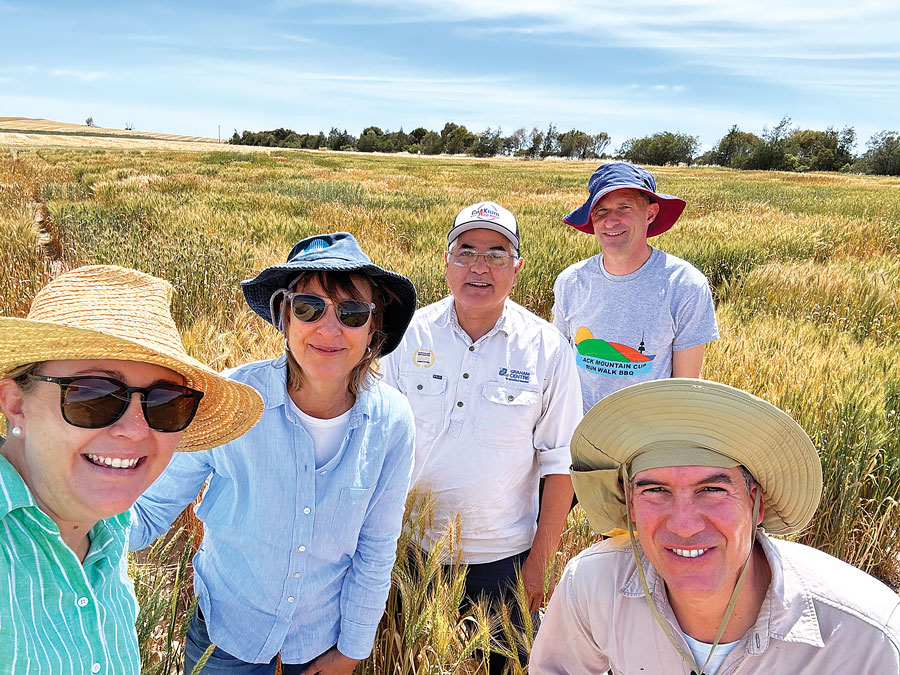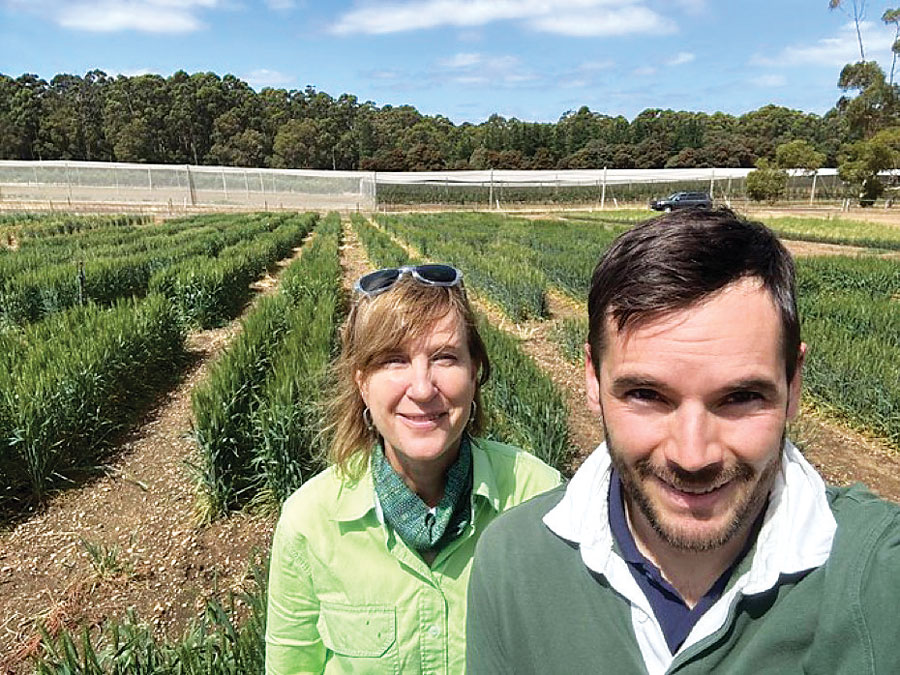The ability of plant cell membranes to flex instead of breaking or bursting at low temperatures could hold the key to reducing late spring frost damage in wheat and is the focus of new research into metabolites and lipids.
Entitled ‘Developing metabolite and lipid biomarkers to select for reduced frost sensitivity in wheat’, the project is one of three GRDC investments – collectively valued at $10 million – researching methods of reducing the impact of spring frosts on wheat yields.
CSIRO principal research scientist Dr Fernanda Dreccer, who is leading the project, says previous research led by Dr Rudy Dolferus with a limited selection of germplasm has hinted that specific plant tissue composition, such as enrichment in some metabolites and lipids, is a potential contributor to differences in frost sensitivity.
Plants are able to change the composition and physical properties of their cell membranes in response to changes in the environment, to protect the content of the cells in response to stressful conditions.

Clockwise from left: Charles Sturt University crop scientist Dr Felicity Harris, CSIRO principal research scientist Dr Fernanda Dreccer, CSU plant scientist Dr Sergio Moroni, CSIRO senior principal research scientist Dr Chris Helliwell and CSIRO senior research scientist Dr Gonzalo Estavillo score part of the germplasm panel multiplied at the Boorowa Agricultural Research Station, NSW, in November. Photo: courtesy Dr Fernanda Dreccer
“When a plant is faced with cold or freezing night-time temperatures, the lipids in the cell membranes get compressed, and when the temperature rises again, it is a common occurrence that the membranes get punctured during decompression,” Dr Dreccer says.
“This leads to dehydration and, very often, irreparable damage, seen for instance as loss of spike fertility.”
Dr Dreccer says the type of lipids that make up the cell membrane can influence the degree of damage, with saturated lipids leading to more rigid membranes in cold temperatures and unsaturated lipids leading to more fluid membranes.
“Higher membrane fluidity and a higher proportion of unsaturated versus saturated lipids could be one of the pathways to follow up,” she says.
Now we have this unique opportunity to further explore genetic diversity from that angle and also investigate other metabolites that came up as potentially interesting in the research I mentioned and also in research carried out in Western Australia.
The project in action
The four-year project will use 400 lines, which combine OzWheat panel genotypes, germplasm supplied by Australian Grain Technologies (AGT) and common checks, in collaboration with the other two projects.
In a complex procedure, researchers will first analyse flag leaf tissue from plants exposed to sub-zero temperatures in controlled-environment frost chambers at Charles Sturt University, Wagga Wagga, to investigate a range of metabolites and then shortlist the main candidates for further analysis.
Because this type of research is time-consuming and expensive, they will also try to develop proxy methods for detecting biomarkers, a phenotyping methodology and genetic markers.
“The team will attempt to develop a phenotyping method to detect these metabolites and lipids based on relating proper chemistry to how leaves reflect light, also known as hyperspectral signature, analysing the information with machine learning methods,” Dr Dreccer says.
“We really are trying to make the most of the chemistry of frost and capture it in a method that – by the end of this project – can be applied at the research level, but later on can be simplified to be extended more widely. Validation for the phenotyping method will be grounded on sampling plants in field trials.”
The project will sow the germplasm in two consecutive years at three sites chosen for frost frequency and variability: Dale Research Site in Western Australia, Mintaro in South Australia, and Wagga Wagga in New South Wales. In the third year, promising germplasm will be grown in the AGT trial network for validation.
The plots will be planted at three different sowing dates to increase the likelihood of exposure to frost.

CSIRO principal research scientist Dr Fernanda Dreccer (left) and WA Department of Primary Industries and Regional Development research scientist Dr Brenton Leske score part of the germplasm panel at the Manjimup Research Station, WA, in February. Photo: courtesy Dr Fernanda Dreccer
“Researchers will go out regularly to check the stage of development of the plants,” Dr Dreccer says.
“It’s crucial to know how advanced in their reproductive stage crops are when a frost event occurs, as frost doesn’t do the same damage to yield at all stages of the crop cycle.
“We will be able to relate the development stage and the timing of cold nights to spike sterility, which will be phenotyped using the latest X-ray CT scanner at the Australian Plant Phenomics Facility in Adelaide.”
Environmental monitoring
To increase the precision of environmental monitoring spatially and temporally in the field trials, in addition to weather station monitoring, there will be a grid of distributed temperature sensors and some check lines contrasting for sensitivity will be continuously monitored for canopy temperature.
“In all the research in frost we are always referring to the air temperature, but plants, even at night, can differ in how they regulate their own temperature in relation to the environment,” she says.
Dr Dreccer, who is a member of the GRDC Northern Panel, also leads a separate project studying drought in pulses and is part of a team investigating heat and frost impacts and prediction tools to quantify yield loss in wheat, barley, canola, chickpea and lentil crops.
“The ultimate goal is to link the spike sterility scores from the frost trials, the environment, the metabolite and lipid composition, the spectral signatures and the genetic information to detect the promising genotypes,” she says.
“Our team is really looking forward to this incredible high-stakes challenge.”
Other partners in this national project are the WA Department of Primary Industries and Regional Development, the University of Western Australia, the South Australian Research and Development Institute, Charles Sturt University, La Trobe University, AGT and Analytics for the Australian Grains Industry.
More information: Fernanda Dreccer, fernanda.dreccer@csiro.au

























































